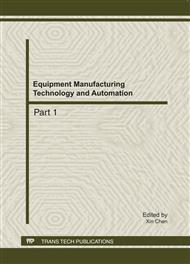p.393
p.397
p.401
p.405
p.410
p.414
p.418
p.423
p.429
Crystal-Controlled Synthesis of Nanophase Titania by Microwave Hydrothermal Method
Abstract:
The different crystal (rutile, rutile-anntase-brookite, anatase, amorphous) titania were prepared by the hydrolysis of titanium tetrachloride (TiCl4) in the absence or presence of HCl or NaOH. The mixture solution was processed in microwave hydrothermal autoclave at 120oC for 1.5 h and then at 180oC for 1 h to precipitate titania. HCl acted as inhibitor, which could control the crystal and shape of the precipitate of titania. NaOH was used to adjust the pH to the required value. As a result, the mixture of rutile (majority), anatase and brookite (minor) was obtained from the aqueous TiCl4 solution without any addition, shuttle-like and well-dispersed nanocrystalline rutile appeared in the presence of HCl from the aqueous TiCl4-HCl solution. Single phase anatase was obtained in the presence of NaOH with pH=7, and when pH=9, the product was quite amorphous. The products were analyzed using XRD and TEM.
Info:
Periodical:
Pages:
410-413
Citation:
Online since:
August 2011
Authors:
Keywords:
Price:
Сopyright:
© 2011 Trans Tech Publications Ltd. All Rights Reserved
Share:
Citation:


